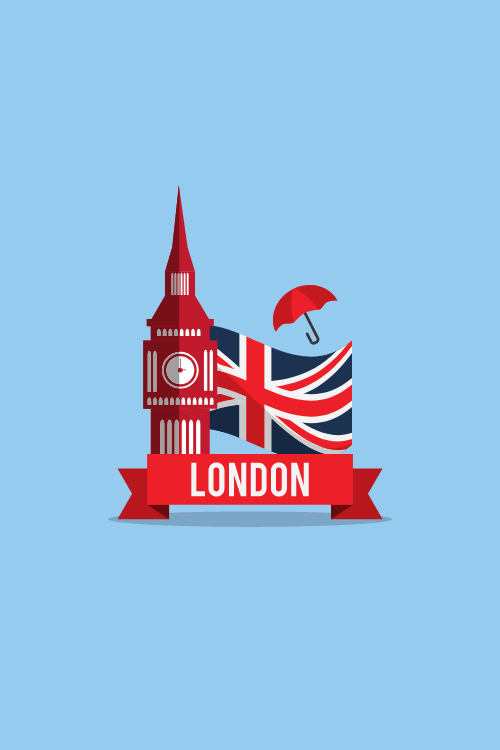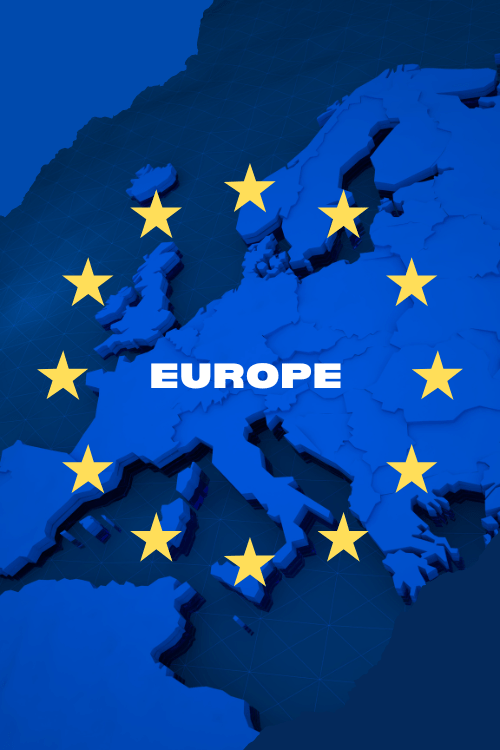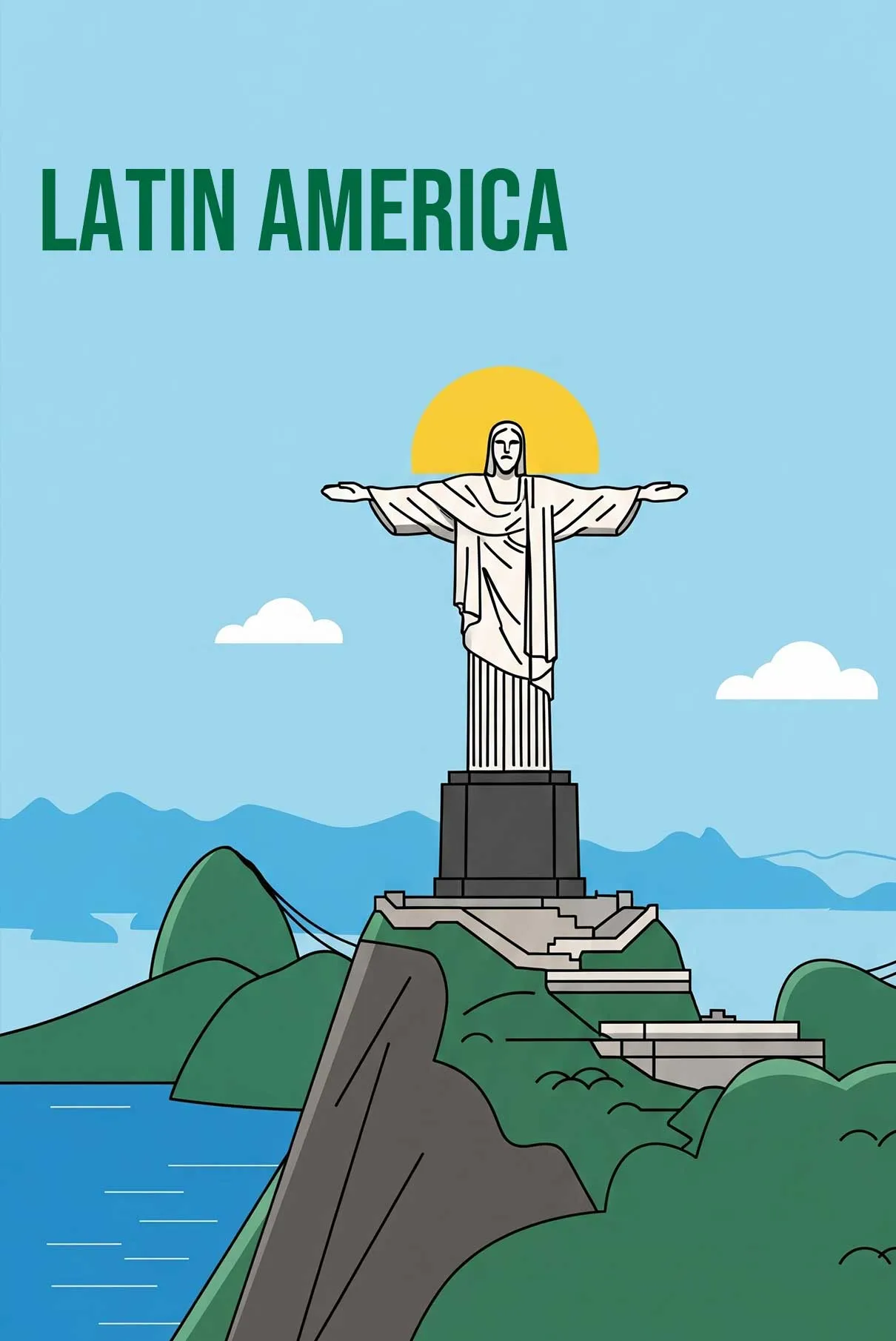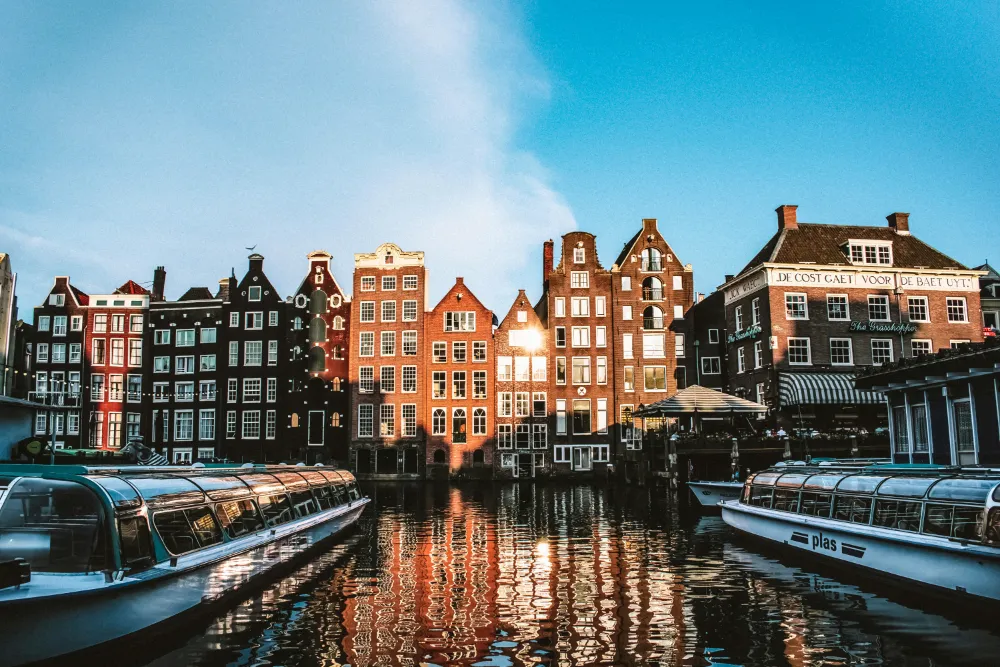eSIM Europe
The Best Travel Destinations in Europe
Dreaming of a trip to Europe? You’re not alone.
The continent’s incredible tapestry of ancient history, jaw-dropping landscapes, and vibrant cultures makes it a perennial favorite. But with so many options, choosing where to go can be overwhelming.
This guide is here to help. We’ve curated the ultimate list of the best travel destinations in Europe tailored to every type of traveler.
Need mobile data that automatically connects as soon as you land in Europe? Click here to see our prepaid eSIM plans here.
What’s Trending in European Travel?
The way we travel in Europe is evolving. As we look towards, two major trends are shaping itineraries: a deeper focus on conscious travel and a celebration of culture in unexpected cities.
The Shift to Sustainable and Slow Travel
Travelers are increasingly seeking more meaningful journeys. This “slow travel” movement emphasizes quality over quantity, encouraging deeper connections with a single region rather than a whirlwind tour of multiple capitals.
Train travel is booming. Expanded night train routes and the beloved Eurail pass make it easier than ever to journey across borders sustainably. More people are also discovering the magic of the “shoulder seasons,” enjoying fantastic weather with fewer crowds.
Spotlight: The European Capitals of Culture
Each year, the EU designates select cities as European Capitals of Culture, bringing them into the international spotlight and funding a year-long program of arts and events. This is a fantastic way to discover up-and-coming destinations that are buzzing with creative energy. Before you travel, it’s always worth checking which cities currently hold the title, as they offer some of the most unique cultural programming on the continent.
Which Classic European Destinations Should You Visit First?
These cities are timeless for a reason. If it’s your first Euro trip or you’re seeking that quintessential European experience, these destinations are the perfect place to start.
Paris, France: Romance, Art, and Culinary Experiences
- Why Go: Paris is buzzing with timeless energy, remaining the undisputed capital of romance, high fashion, and art.
- What to See & Do: Beyond the iconic allure of the Eiffel Tower and the Louvre, explore the revitalized neighborhoods and artist enclaves like Montmartre. Take a cooking class, picnic in the Luxembourg Gardens, and simply stroll along the Seine.
- Good to Know: Book museums and popular attractions far in advance, as time slots fill up quickly. The city’s metro system is efficient for getting around, but the best way to discover its magic is on foot.
Rome, Italy: Ancient History and Unbeatable Food
- Why Go: To walk through 3,000 years of history in a city that feels like a living museum. The energy of Rome is palpable, from its ancient ruins to its vibrant street life.
- What to See & Do: Stand in awe of the Colosseum, wander through the Roman Forum, and toss a coin into the Trevi Fountain. For a more local feel, get lost in the charming, ivy-clad streets of the Trastevere neighborhood. Discover that the simplest bowl of cacio e pepe can be a life-altering experience.
- Good to Know: Check for major city-wide or religious events before you book, as things like a Catholic Jubilee Year can draw massive crowds and impact accommodation prices and availability.
London, United Kingdom: Cultural Diversity and Iconic Landmarks
- Why Go: London is a world in one city. Its blend of regal history, cutting-edge culture, and multicultural energy is intoxicating.
- What to See & Do: From the grandeur of Buckingham Palace to the vibrant food scenes of Shoreditch and Brixton, there’s something new around every corner. Catch a world-class show in the West End, explore the many free world-class museums (like the British Museum or the Tate Modern), and enjoy the city’s sprawling green parks.
- Good to Know: U.S. citizens and many other nationalities now need to apply for an Electronic Travel Authorisation (ETA) before traveling to the UK. Always check the latest government requirements before your trip. The Tube (subway) is the best way to navigate this vast city.
Amsterdam, Netherlands: Unique Canals, Museums, and Cycling Culture
- Why Go: There’s no place quite like Amsterdam. Its iconic canals, gabled houses, and world-class art museums create a unique, laid-back atmosphere.
- What to See & Do: The best way to explore is like a local: on a bicycle. Visit the Anne Frank House (book months ahead), see masterpieces at the Rijksmuseum and Van Gogh Museum, and take a canal cruise for a different perspective of the city.
- Good to Know: The city actively manages tourism to preserve its charm. Be a respectful visitor. Pre-booking all tickets online is essential, not just for major attractions but for many smaller museums as well.
What are the Top Trending Destinations in Europe?
Look beyond the usual suspects to discover these rising stars. They offer incredible value, fewer crowds, and a sense of discovery, making them some of the best travel destinations in Europe right now.
The Albanian Riviera, Albania: Budget-Friendly Beaches
- Why Go: Dubbed “the Maldives of Europe,” the Albanian Riviera offers a stunning Mediterranean coastline for a fraction of the price of its famous neighbors.
- What to See & Do: Discover crystal-clear turquoise waters at stunning beaches like Ksamil and Dhërmi. Explore coastal towns like Sarandë and Himarë, and visit the UNESCO World Heritage site of Butrint, an ancient city spanning Greek, Roman, and Ottoman history.
- Good to Know: While infrastructure is developing rapidly, it’s still a destination with a raw, adventurous feel. It’s incredibly affordable, with fresh seafood and local wine being a major highlight.
Slovenia: Sustainable and Outdoor Adventure
- Why Go: Slovenia is a paradise for nature lovers and a global leader in sustainability. This compact country packs in alpine peaks, emerald rivers, a charming coastline, and one of Europe’s greenest capitals.
- What to See & Do: Hike or raft in the majestic Julian Alps and the emerald-green Soča River valley. Visit the fairytale setting of Lake Bled with its island church and cliffside castle, and explore the dramatic Vintgar Gorge. The capital, Ljubljana, is a car-free delight.
- Good to Know: It’s a playground for outdoor activities. You can be hiking in the mountains in the morning and dipping your toes in the Adriatic Sea by the afternoon.
The Azores, Portugal: Hiking, Whale Watching, and Epic Nature
- Why Go: These nine volcanic islands in the middle of the Atlantic are Portugal’s best-kept secret. It’s an otherworldly destination for adventurers who want to feel a world away from mainland Europe.
- What to See & Do: The Azores offer world-class whale and dolphin watching, hiking along dramatic crater lakes like Sete Cidades, bathing in natural geothermal hot springs, and exploring unique volcanic landscapes.
- Good to Know: Each island has its own character. São Miguel is the largest and most accessible, while Pico is known for its towering volcano and vineyards, and Flores is a lush, wild paradise.
Romania: Fairytale Castles and Medieval Towns
- Why Go: To step into a real-life fairytale without the fairytale prices. Romania offers a rich tapestry of history, folklore, and stunning mountain scenery.
- What to See & Do: The region of Transylvania is home to stunning medieval towns like Sighișoara (a UNESCO site) and Brașov. Explore fortified churches and, of course, the legendary Bran Castle (often called Dracula’s Castle).
- Good to Know: Beyond the Dracula myth, you’ll find a country with immense charm, warm hospitality, and hearty, delicious cuisine. It remains one of Europe’s most affordable destinations.
How Do You Choose a European Destination Based on Your Travel Style?
The “best” destination is the one that’s best for you. Here’s a breakdown of top spots in Europe based on your interests.
The Best Places for Food Lovers: San Sebastián & Bologna
San Sebastián, Spain: Foodie heaven. This Basque city has one of the highest concentrations of Michelin stars in the world, but the real magic is in the casual pintxos bars, where you can hop from one to the next, sampling incredible small bites.
Bologna, Italy: The heart of Italy’s “food valley.” This is the home of tagliatelle al ragù (the real bolognese), mortadella, and Parmigiano Reggiano. It’s a city dedicated to the art of eating well.
The Best Places for Adventure Seekers: Interlaken & The Dolomites
Interlaken, Switzerland: The undisputed adventure capital of Europe. Nestled between two lakes in the Swiss Alps, this is the place for skydiving, paragliding, canyoning, and glacier trekking.
The Dolomites, Italy: For world-class hiking and climbing, the jagged limestone peaks of the Italian Dolomites offer breathtaking scenery and a network of trails and via ferratas (protected climbing routes) for all skill levels.
The Best Romantic Getaways for Couples: Santorini & The Amalfi Coast
Santorini, Greece: With its iconic white-washed villages clinging to volcanic cliffs above the deep blue Aegean Sea, Santorini is the epitome of romance. Perfect for sunset views and luxurious escapes.
The Amalfi Coast, Italy: For a taste of la dolce vita, the Amalfi Coast offers glamorous cliffside towns like Positano and Ravello, stunning coastal drives, and long, leisurely Italian meals.
The Best European Destinations for Families: Copenhagen & The Algarve
Copenhagen, Denmark: Safe, clean, and incredibly family-friendly. Attractions like the magical Tivoli Gardens amusement park, the colorful Nyhavn harbor, and a city designed for biking make it a delight for all ages.
The Algarve, Portugal: For sun and fun, Portugal’s Algarve region boasts beautiful, calm beaches, family-friendly resorts, water parks, and sea caves to explore by boat.
The Best Places in Europe for Solo Travel: Lisbon & Iceland
Lisbon, Portugal: A fantastic choice for solo travelers, known for its safety, friendly atmosphere, excellent hostels, and vibrant, explorable neighborhoods. It’s easy to meet other travelers or enjoy your own company.
Iceland: Offers solo adventurers unparalleled natural beauty on the epic Ring Road. The country is incredibly safe, and the tourism infrastructure is well-suited for independent travelers looking to chase waterfalls, glaciers, and volcanoes.
The Best Budget-Friendly Cities for Backpackers: Prague & Budapest
Prague, Czech Republic: Continues to be a backpacker favorite with its stunning “fairytale” architecture, famously cheap and excellent beer, and vibrant nightlife.
Budapest, Hungary: Equally compelling, Budapest offers unique “ruin bars” set in derelict buildings, relaxing thermal baths, and a rich history at a fraction of the cost of Western European capitals.
The Best Places for History Buffs: Athens & Berlin
Athens, Greece: Walk in the footsteps of philosophers in the cradle of Western civilization. The Acropolis is a must-see, but the entire city is layered with thousands of years of history waiting to be discovered.
Berlin, Germany: For a deep dive into more recent history, Berlin offers a powerful look into the 20th century with the remnants of the Berlin Wall, Checkpoint Charlie, and countless poignant museums that document its turbulent past and resilient present.
The Best Party Cities in Europe: Ibiza & Belgrade
Ibiza, Spain: Remains the global epicenter of electronic music, with legendary super-clubs hosting the world’s best DJs all summer long.
Belgrade, Serbia: For a grittier, more alternative, and affordable party scene, Belgrade is famous for its floating river clubs (splavovi) that rage on the Danube until dawn.
What are Europe’s Best-Kept Secrets?
Ready to escape the crowds? These underrated spots are some of the best travel destinations in Europe for those in the know.
Ghent, Belgium: While many tourists flock to Bruges, nearby Ghent offers the same medieval charm with a more authentic, lived-in feel. Home to the imposing Gravensteen castle and a vibrant student population, Ghent is a true Belgian gem with stunning canals and a fantastic food scene.
The Baltic States: Often overlooked, the capital cities of Estonia, Latvia, and Lithuania are incredible destinations. Explore Tallinn’s perfectly preserved medieval Old Town, admire Riga’s world-class Art Nouveau architecture, and get lost in Vilnius’s sprawling Baroque cityscape. They are safe, affordable, and full of charm.
The Faroe Islands, Denmark: An autonomous archipelago halfway between Norway and Iceland, the Faroe Islands are a dream for hikers and photographers. Think dramatic, sheer cliffs plunging into the ocean, grass-roofed houses, and more sheep than people. This is raw, untamed nature at its most breathtaking.
Poland’s Tri-City: On Poland’s Baltic coast lies the “Tri-City.” It’s a fascinating metropolitan area made of three distinct cities: Gdańsk is rich with maritime history and beautifully rebuilt architecture; Sopot is a chic seaside resort with a long wooden pier and sandy beaches; and Gdynia is a modernist port city. Together, they offer a unique mix of history, relaxation, and city life.
How Should You Plan Your Trip to Europe?
A little planning goes a long way. Here are some essential tips for your European vacation.
When is the best month to visit Europe? For the best balance of good weather and fewer crowds, the shoulder seasons are ideal: April to June and September to October. Summer (July and August) is peak season with the best weather but also the biggest crowds and highest prices.
Getting Around: Trains and Budget Airlines Europe has a fantastic and extensive train network. A Eurail Pass can be a great value if you plan on multiple long-distance journeys. For longer hops, budget airlines like Ryanair and EasyJet offer cheap fares, but be mindful of their strict baggage fees and out-of-the-way airports.
Essential Tips for a Cheap Europe Trip Traveling in Europe doesn’t have to break the bank. Stay in hostels or private rooms in guesthouses, use public transport, eat at local markets and bakeries, and take advantage of free walking tours. Traveling in Eastern and Southern Europe is significantly more affordable than in the West.
What to Pack for Your European Vacation When packing, think essentials. Comfortable walking shoes are non-negotiable. Always bring layers of clothing, as the weather can be unpredictable. You’ll also need a universal power adapter, a portable power bank, a reusable water bottle, and digital and physical copies of your important documents like your passport. Finally, a light rain jacket is a smart addition, regardless of the season.
Understanding the Schengen Area The Schengen Area is a zone of 29 European countries that have abolished internal border controls, meaning you can travel freely between them without passport checks once you’ve entered the zone. Most, but not all, EU countries are in the Schengen Area (e.g., Ireland is not). Always check visa requirements for your nationality before you travel.
Answering Your Top Questions About Traveling in Europe
What is the #1 travel destination in Europe? While “best” is subjective, cities like Paris, Rome, and London consistently top the charts for popularity and visitor numbers. However, trending destinations like the Albanian Riviera are quickly gaining ground for their value and beauty.
What is the cheapest and prettiest country in Europe? Countries in Eastern and Southern Europe generally offer the best value. Albania is a top contender, combining stunning beaches with extremely low costs. Romania and Portugal also offer incredible beauty and rich culture on a budget.
Where is the prettiest place in Europe in the summer? It’s hard to beat the Mediterranean in summer. The Amalfi Coast in Italy, the Greek island of Santorini, and the beaches of the Algarve in Portugal are all breathtakingly beautiful and deliver that classic European summer experience.
How can I travel Europe on a budget? Focus on affordable regions like Eastern Europe, stay in hostels or budget guesthouses, use public transport, cook some of your own meals by shopping at local markets, and travel during the shoulder season (spring or fall) to save a significant amount.
What is the safest country in Europe for solo female travel? Iceland is consistently ranked as one of the safest countries in the world. Other excellent options known for safety, ease of travel, and friendly locals include Slovenia, Portugal, and Finland.
How many days are enough for a Europe trip? For a single country or a couple of major cities, 10-14 days is a good amount of time to explore without feeling too rushed. If you want to experience multiple countries, aim for at least three to four weeks to truly appreciate each stop.









